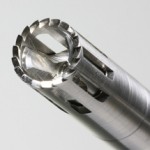Homogenizer Options: Choosing What’s Right for Your Specific Needs
There are a dizzying assortment of choices when it comes to choosing the appropriate homogenizer or homogenizers for your laboratory or production facility. Mixing and processing tasks can often be accomplished with tools as simple as standard magnetic stir plates. But many applications will require more sophisticated mixing technology.
This is especially true in the burgeoning fields of biochemistry and pharmaceuticals. These more sophisticated mixing, size-reducing, and other tasks call for more sophisticated machines capable of handling a wide range of challenging materials. That’s where industrial-grade homogenizers come into play.
Magnetic stir plates get the job done if you are performing simple laboratory tasks, such as mixing aqueous reagents for routine tests. But when it comes to producing repeatable, consistent results with carefully designed processes — and perhaps far more challenging ingredients — more sophisticated machinery is often required. Specifically, a high-shear, high-pressure homogenizer may be needed to achieve the results you seek.

Choosing the right homogenizer for your unique needs will depend on several factors. Rotor-stator homogenizers with interchangeable parts offer significant flexibility, in that you may switch out components to accommodate changing process needs. Other considerations may be summarized as follows:
Volume
Typical R&D operations involve small quantities of investigative substances. For these investigations, handheld or modular homogenizer drivers (motors), with interchangeable rotors may be most appropriate. The X120 handheld Homogenizer Drive, from CAT Scientific, for example, is suitable for volumes ranging from 0.1 mL to 1 L. The Unidrive X1000 and X1000D Homogenizer Drive handles volumes ranging from 0.1 mL up to 2 L. For larger volumes, suitable, perhaps, for full production runs, turn to the X1740 High Power Homogenizer Drive (0.5 L to 20 L capacity), or perhaps the DK40 Flow Through Chamber, capable of processing a whopping 5,000 L.
Viscosity
The relative thickness of your liquid media will influence the level of power that will be required for your homogenizer to accomplish its work effectively. Viscous liquids resist mixing, and thus significant homogenization energy must be applied to effect uniform blending.
Size Reduction
Some homogenization tasks, such as those involving mixing powders into liquids, may benefit from particle size reduction. Deagglomeration of solids or powders may also be required to achieve proper homogenization or emulsification. In these instances, choose the rotor/stator combination that is most appropriate to handle these tasks. Our homogenizers have been designed to maximize shear forces, which reduces processing times. This in turn helps minimize frictional heating of your liquids.
